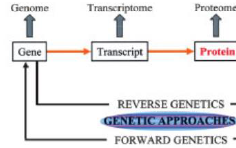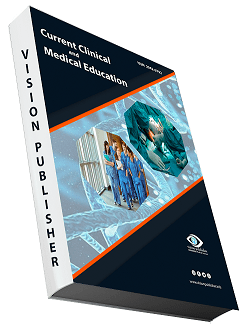Proteomics, Food Borne Pathogen: Applications of Food Science in Rice, Proteomics of Yield Affected by Environmental Stress, Transgenic and Food-Safety Evaluation
Keywords:
Food Science in Rice, Environmental Stress, Transgenic, Food-Safety, EvaluationAbstract
Farmers may tackle climate change, sustainability, and food insecurity by using molecular breeding techniques like genome editing and genetic manipulation in fodder crop species. Although the majority of genetically modified (GM) products and biomass end up in livestock feed, there is a dearth of data about the safety evaluation of GM forage crops designated solely for animal consumption. Taking into account the varied risk profiles of the two types of results, a comparable methodology developed for genetically modified (GM) food might be used to the evaluation of forage crops under the current regulatory review framework. Genomic modification (GM) feed and food can benefit from the same methods employed in environmental safety assessments, genetic engineering (GE), molecular characteriszation, and genetic tracking (HGT). Nevertheless, methodological tweaks may be necessary due to the fact that various sections of the genetically modified plant that animals consume may have varying amounts of the new proteins, hence altering their exposure. No clear guidelines exist for the conduct of nutritional, toxicological, or allergenicity research on genetically modified (GM) feed specifically for animals. The regulatory cost of ensuring the safety of genetically modified (GM) feed can be reduced by the development of more tailored measures that protect the species that will eat the crop. More effective use of resources and elimination of superfluous evaluation call for a rethinking of the risk assessment process for genetically modified (GM) food and feed. Ultimately, we need a better system to evaluate genetically modified (GM) innovative crops so that we can speed up the commercialisation of goods that may improve people's health and the economy.
Downloads
References
Arena S, Renzone G, D’Ambrosio C, Salzano AM, Scaloni A (2017). Dairy products and the Maillard reaction: A promising future for extensive food characterization by integrated proteomics studies. Food Chemistry. 219: 477– 489.
Corbisier, P., Pinheiro, L., Mazoua, S., Kortekaas, A. M., Chung, P. Y. J., Gerganova, T., et al. (2015). DNA copy number concentration measured by digital and droplet digital quantitative PCR using certified reference materials. Anal. Bioanal. Chem. 407 (7), 1831–1840.
Cunliffe, K. V., Vecchies, A. C., Jones, E. S., Kearney, G. A., Forster, J. W., Spangenberg, G. C., et al. (2004). Assessment of gene flow using tetraploid genotypes of perennial ryegrass (Lolium perenne L.). Aust. J. Agric. Res. 55, 389–396.
Dadgarnejad, M., Kouser, S., and Moslemi, M. (2017). Genetically modified foods: promises, challenges and safety assessments. Appl. Food Biotechnol. 4 (4), 193– 202.
Dalmira, F. U., Melina, P. U., José-Benigno, V. T., Josefina, L. F., Raymundo, G. E., and Abraham, A. S. (2016). Development, optimization, and evaluation of a duplex droplet digital PCR assay to quantify the T-nos/hmg copy number ratio in genetically modified maize. Anal. Chem. 88 (1), 812–819.
De Santis, B., Stockhofe, N., Wal, J. M., Weesendorp, E., Lallès, J. P., van Dijk, J., et al. (2018). Case studies on genetically modified organisms (GMOs): potential risk scenarios and associated health indicators. Food Chem. Toxicol. 117, 36–65. doi: 10.1016/j.fct.2017.08.033
Delaney, B. (2015). Safety assessment of foods from genetically modified crops in countries with developing economies. Food Chem. Toxicol. 86, 132–143.
Demeke, T., Holigroski, M., Eng, M., and Xing, J. (2016). Absolute quantification of genetically engineered traits with droplet digital PCR: Effect of DNA treatments and spiking with non-target DNA. Food Control 68, 105–111.
Devos, Y., Demont, M., Dillen, K., Reheul, D., Kaiser, M., and Sanvido, O. (2009). Coexistence of genetically modified and Non-GM crops in the european union: a review. Sustain. Agric. 29, 11–30.
Devos, Y., Gaugitsch, H., Gray, A. J., Maltby, L., Martin, J., Pettis, J. S., et al. (2016). Advancing environmental risk assessment of regulated products under EFSA’s remit. EFSA J. 14, e00508.
Dibden, J., Gibbs, D., and Cocklin, C. (2013). Framing GM crops as a food security solution. J. Rural Stud. 29, 59–70.
Dobnik, D., Spilsberg, B., Bogožalec Košir, A., Holst-Jensen, A., and Žel, J. (2015). Multiplex quantification of 12 European Union authorized genetically modified maize lines with droplet digital polymerase chain reaction. Anal. Chem. 87 (16), 8218–8226.
Dobnik, D., Štebih, D., Blejec, A., Morisset, D., and Žel, J. (2016). Multiplex quantification of four DNA targets in one reaction with Bio-Rad droplet digital PCR system for GMO detection. Sci. Rep. 6, 1–9.
Domingo, J. L. (2007). Toxicity studies of genetically modified plants: a review of the published literature. Crit. Rev. Food Sci. Nutr. 47(8), 721-733.
Domingo, J. L. (2016). Safety assessment of GM plants: an updated review of the scientific literature. Food Chem. Toxicol. 95, 12–18.
Dumitrache, A., Natzke, J., Rodriguez Jr, M., Yee, K. L., Thompson, O. A., Poovaiah, C. R., et al. (2017). Transgenic switchgrass (Panicum virgatum L.) targeted for reduced recalcitrance to bioconversion: a 2‐year comparative analysis of field‐grown lines modified for target gene or genetic element expression. Plant Biotechnol. J. 15(6), 688–697.
Einspanier, R., Klotz, A., Kraft, J., Aulrich, K., Poser, R., Schwagele, F., et al. (2001). The fate of forage plant DNA in farm animals: a collaborative case-study investigating cattle and chicken fed recombinant plant material. Eur. Food Res. Technol. 212, 129–134. doi: 10.1007/s002170000248 Entransfood, the European network on safety assessment of genetically modified food crops (2004). Genetically modified crops in the EU: food safety assessment, regulation, and public concerns. Overarching report. European commission. Eriksson, D. (2019). The evolving EU regulatory framework for precision breeding. Theor. Appl. Genet. 132 (3), 569–573,
Faust, M., and Miller, L. (1997). Study finds no Bt in milk. IC-478. Fall special livestock edition. Iowa State University Extension, Ames, Iowa, 6 p. Fernandez, A., and Paoletti, C. (2018). Unintended effects in genetically modified food/feed safety: a way forward. Trends In Biotechnol. 36 (9), 872–875.
Fernandez, A., Mills, E. N. C., Lovik, M., Spoek, A., Germini, A., Mikalsen, A., et al. (2013). Endogenous allergens and compositional analysis in the allergenicity assessment of genetically modified plants. Food Chem. Toxicol. 62, 1–6.
Fitzpatrick, S., Reisen, P., and McCaslin, M. (2003). Pollen-mediated gene flow in alfalfa: a three-year summary of field research. In Proceedings of the 2003 central alfalfa improvement conference, virtual meeting, July, pp. 21–25.
Flachowsky, G., Aulrich, K., Berk, A., Daenicke, R., and Reuter, T. (2002). Nutritional assessment of feeds from genetically modified (GM) crops. Proc. Soc. Nutr. Physiol. 11, 183–186.
Flachowsky, G., Schafft, H., and Meyer, U. (2012). Animal feeding studies for nutritional and safety assessments of feeds from genetically modified plants: A review. J. Für Verbrauch. und Lebensm. 7 (3), 179–194
Baeker R, Haebel S, Schlatterer K, Schlatterer B (2002). Lipocalin-type prostaglandin D synthase in milk: a new biomarker for bovine mastitis. Prostaglandins and Other Lipid Mediators. 67: 75–88.
Crofts AJ, Crofts N, Whitelegge JP, Okita TW (2010) Isolation and identi fi cation of cytoskeleton-associated prolamine mRNA binding proteins from developing rice seeds. Planta 231:1261–1276
Cui S, Huang F, Wang J, Ma X, Cheng Y, Liu J (2005) A proteomic analysis of cold stress responses in rice seedlings. Proteomics 5:3162–3172
Davatgar N, Neishabouri MR, Sepaskhah AR, Soltani A (2009) Physiological and morphological responses of rice (Oryza sativa L.) to varying water stress management strategies. Int J Plant Prod 3:19–32
Devos MK, Gale DM (2000) Genome relationships: the grass model in current research. Plant Cell 12:637–643
Greenbaum D, Colangelo C, Williams K, Gerstein M (2003) Comparing protein abundance and mRNA expression levels on a genomic scale. Genome Biol 4:117
Hajduch M, Ganapathy A, Stein JW, Thelen JJ (2005) A systematic proteomic study of seed filling in soybean: establishment of highresolution two-dimensional reference maps, expression profiles, and an interactive proteome database. Plant Physiol 137:1397–1419
Holdsworth MJ, Finch-Savage WE, Grappin P, Job D (2008) Post-genomics dissection of seed dormancy and germination. Trends Plant Sci 13:7–13
Hu H, Dai M, Yao J, Xiao B, Li X, Zhang Q, Xiong L (2006) Overexpressing a NAM, ATAF, and CUC (NAC) transcription factor enhances drought resistance and salt tolerance in rice. Proc Natl Acad Sci USA 103:12987–12992
Isshiki M, Nakajima M, Satoh H, Shimamoto K (2000) Dull rice mutants with tissue specific effects on the splicing of the waxy pre-mRNA. Plant J 23:451–460
Job C, Rajjou L, Lovigny Y, Belghazi M, Job D (2005) Patterns of protein oxidation in Arabidopsis seeds and during germination. Plant Physiol 138:790–802
Kang HG, Park S, Matsuoka M, An G (2005) White-core endosperm floury endosperm-4 in rice is generated by knockout mutations in the C-type pyruvate orthophosphate dikinase gene (OsPPDKB). Plant J 42:901–911
Kang S, Chen S, Da S (2010) Proteomics characteristics of rice leaves in response to environmental factors. Front Biol 5:246–254
Lao NT, Schoneveld O, Mould RM, Hibberd JM, Gray JC, Kavanagh TA (1999) An Arabidopsis gene encoding a chloroplast-targeted â-amylase. Plant J 20:519–527
Liu X, Guo T, Wan X, Wang H, Zhu M, Li A, Su N, Shen Y, Mao B, Zhai H, Mao L, Wan J (2010) Transcriptome analysis of grain- filling caryopses reveals involvement of multiple regulatory pathways in chalky grain formation in rice. BMC Genomics 11:730
Matsukura C, Saitoh T, Hirose T, Ohsugi R, Perata P, Yamaguchi J (2000) Sugar uptake and transport in rice embryo. Expression of companion cell-speci fi c sucrose transporter (OsSUT1) induced by sugar and light. Plant Physiol 124:85–93
Oliver SN, Van Dongen JT, Alfred SC, Mamun EA, Zhao X, Saini HS, Fernandes SF, Blanchard CL, Sutton BG, Geigenberger P, Dennis ES, Dolferus R (2005) Cold-induced repression of the rice anther-specific cell wall invertase gene OSINV4 is correlated with sucrose accumulation and pollen sterility. Plant Cell Environ 28:1534–1551
Rajjou L, Gallardo K, Debeaujon I, Vandekerckhove J, Job C, Job D (2004) The effect of a-amanitin on the Arabidopsis seed proteome highlights the distinct roles of stored and neosynthesized mRNAs during germination. Plant Phy iol 134:1598–1613
Repetto O, Rogniaux H, Firnhaber C, Zuber H, Küster H, Larré C, Thompson R, Gallardo K (2008) Exploring the nuclear proteome of Medicago truncatula at the switch towards seed fi lling. Plant J 56:398–410
Watson BS, Asirvatham VS, Wang L, Sumner LW (2003) Mapping the proteome of barrel medic ( Medicago truncatula). Plant Physiol 131:1104–1123
Yano H, Kuroda M (2006) Disulfide proteome yields a detailed understanding of redox regulations: a model study of thioredoxin-linked reactions in seed germination. Proteomics 6:294–300
Zeeman SC, Northrop F, Smith AM, Rees T (1998) A starch-accumulating mutant of Arabidopsis thaliana deficient in a chloroplastic starch hydrolyzing enzyme. Plant J 15:357–365
Bevan, M., Walsh, S., The Arabidopsis genome: a foundation for plant research. Genome Res. 2005, 15, 1632–1642.
Bourguignon, J., Jaquinod, M., An Overview of the Arabidopsis Proteome. in: Agrawal, G. K., Rakwal, R. (Eds.), Plant Proteomics: Technologies, Strategies, and Applications,Wiley, Hoboken, NJ 2008, pp. 143–161.
Jones, A. M., Chory, J., Dangl, J. L., Estelle, M. et al., The impact of Arabidopsis on human health: diversifying our portfolio. Cell 2008, 133, 939–943.
Van Norman, J. M., Benfey, P. N., Arabidopsis thaliana as a model organism in systems biology. Wiley Interdiscip. Rev. Syst. Biol. Med. 2009, 1, 372–379.
Rakwal, R., Agrawal, G. K., Rice proteomics: current status and future perspectives. Electrophoresis 2003, 24, 3378–3389.
Bedell, J. A., Budiman, M. A., Nunberg, A., Citek, R. W. et al., Sorghum genome sequencing by methylation filtration. PLoS Biol. 2005, 3, e13.
Jaillon, O., Aury, J. M., Noel, B., Policriti, A. et al., The grapevine genome sequence suggests ancestral hexaploidization in major angiosperm phyla. Nature 2007, 449, 463–467.
Schmutz, J., Cannon, S. B., Schlueter, J., Ma, J. et al., Genome sequence of the palaeopolyploid soybean. Nature 2010, 463, 178–183. [16] International Tomato Genome Sequencing Project.
Schnable, P. S., Ware, D., Fulton, R. S., Stein, J. C. et al., The B73 maize genome: complexity, diversity, and dynamics. Science 2009, 326, 1112–1115.
Tuskan, G. A., DiFazio, S., Jansson, S., Bohlmann, J. et al., The genome of black cottonwood, Populus trichocarpa (Torr. and Gray). Science 2006, 313, 1596–1604.
Lu, C., Wallis, J. G., Browse, J., An analysis of expressed sequence tags of developing castor endosperm using a full-length cDNA library. BMC Plant Biol. 2007, 7, 42.
Baerenfaller, K., Grossmann, J., Grobei, M. A., Hull, R. et al., Genome-scale proteomics reveals Arabidopsis thaliana gene models and proteome dynamics. Science 2008, 320, 938–941.
Castellana, N. E., Payne, S. H., Shen, Z., Stanke, M. et al., Discovery and revision of Arabidopsis genes by proteogenomics. Proc. Natl. Acad. Sci. USA 2008, 105, 21034–21038.

Downloads
Published
How to Cite
Issue
Section
License
Copyright (c) 2024 Summia Khalil Ibrahim, Fatima Jassim Salman, Randa Jawad Kazim, Kalthoum Sattar Salim Makki

This work is licensed under a Creative Commons Attribution 4.0 International License.
Current Clinical and Medical Education













